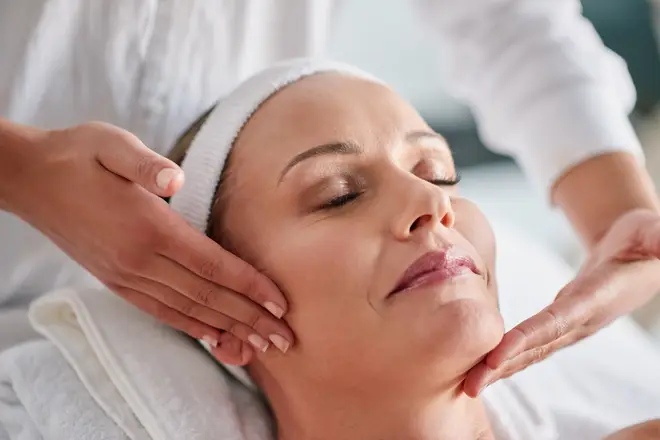What are acid peels, is the skincare treatment painful and what does it entail?
16 December 2019, 19:41 | Updated: 16 December 2019, 19:43

If skincare isn't quite cutting it for you, then there's number of different options you could invest in for a clear face.
Skincare has always been a huge part of any beauty and healthcare lover's daily routine but nowadays medical treatments from licensed professionals are on the rise, with thousands flooding to get a variety of different procedures on the regular.
Skin peels is one step above using your toners, moisturisers, serums and so on and there's a variety of different ones available.

Simply, its broken down into three different kinds of chemical peels, all of which transform your skin and have varying levels of skin rejuvenation.
Heart.co.uk spoke to Dr Nina Bal, a Cosmetic Dental Surgeon and Facial Aesthetics Doctor based at her Facial Sculpting clinic in Marylebone, London.
Dr Nina describes: "Facial skin peels are a very popular and safe non-surgical procedure that can boost your skin’s appearance and help to dramatically reduce the effects of skin damage.
"A low-concentration peeling agent is applied to the skin, prompting a peeling process.
"The top layer of dead skin peels off and the resulting accelerated cell growth – part of the healing process – leaves skin looking and feeling firmer, smoother and younger.
"With the treatment lasting up to an hour, you can squeeze a facial peel into a lunch break."

She continues: "The effects can be seen instantly with superficial peels or within a week to 10 days for deeper peels, depending on which treatment is right for you."
Dr Nina recommends skin peels "to everyone" as "they’re the entry point of non-surgical aesthetic treatments".
Her skin peels start from £200 but she offers various other skin treatments such as Mesotherapy, Microneedling, Aqualyx and Ultherapy.
The Mayo Clinic describe the three typical levels of skin peels that are available, and they are:
Light chemical peel - A light (superficial) chemical peel removes the outer layer of skin (epidermis).
It can be used to treat fine wrinkles, acne, uneven skin tone and dryness.
You might have a light chemical peel as often as every two to five weeks depending on your desired results.
Medium chemical peel - This type of chemical peel removes skin cells from the epidermis and from portions of the upper part of your middle layer of skin (dermis).
A medium chemical peel can treat wrinkles, acne scars and uneven skin tone.
You might repeat a medium chemical peel after three to nine months to maintain results.
Deep chemical peel - A deep chemical peel removes skin cells from the epidermis and from portions of the mid to lower layer of your dermis.
Your doctor might recommend a deep chemical peel if you have deeper wrinkles, scars or precancerous growths.
A deep chemical peel can only be performed once.
Light peels don't hurt at all, although there's some warmth and a slight bit of stinging during one stage of the process, whereas medium and deep peels can be quite sensitive when recovering.


































